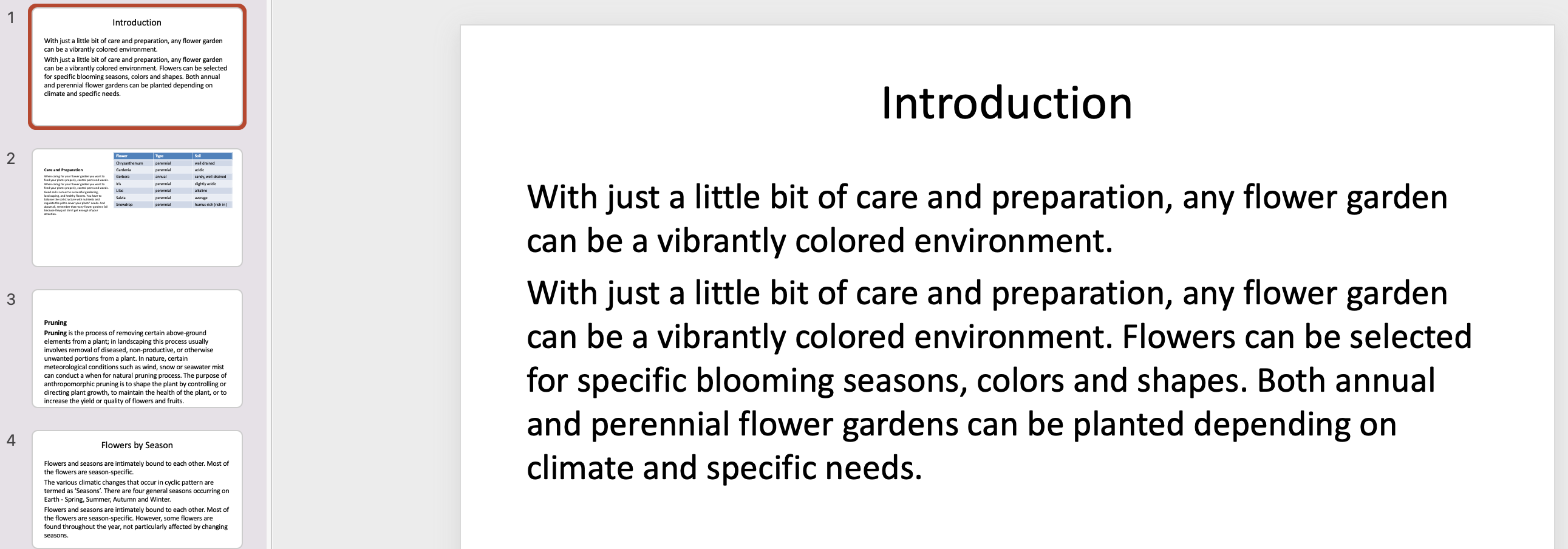Creating PowerPoint Slides from DITA Content
14 Feb 2022
Read time: 2 minute(s)
Pandoc is a command-line interface that can convert lots of input formats (e.g. Markdown) to many types of output formats (e.g. Powerpoint).
Here is how to publish DITA XML content to Powerpoint using Pandoc:
- Open your DITA map in the Oxygen XML Editor DITA Maps Manager view. For my example, I will use the OXYGEN_INSTALL_DIR/samples/flowers/flowers.ditamap sample.
- Use the Configure Transformation Scenarios toolbar button, create a new transformation scenario of the type DITA-OT transformation, and choose GitHub-flavored Markdown as the transformation type.
- In the transformation scenario's Output tab, specify the folder where the Markdown content should be generated.
- In the same transformation scenario's Parameters tab, set the
root-chunk-override parameter to the value of
to-contentto produce a single large Markdown file that contains all the DITA map's content. - Run the transformation scenario to transform your DITA content into Markdown.
- Download the Pandoc command-line utility specific for your platform from: https://pandoc.org/installing.html.
- Convert the Markdown file produced from DITA content to PPTX using the
pandoccommand line:pandoc -f markdown -t pptx -o /path/to/out/flowers.pptx /path/tp/flowers/out/flowers.md
Result: You can open the resulting flowers.pptx in Powerpointl. For each DITA topic, you should have a separate slide:

Tip:
You can use the same approach of producing Markdown
from DITA and then using Pandoc to produce other outputs such as Wiki, EPUB, Word, RTF,
or PDF.
Tip:
To produce web slides from DITA content, you can also
use the free DITA to RevealJS plugin created by Stefan Jung: https://github.com/doctales/org.doctales.reveal.
